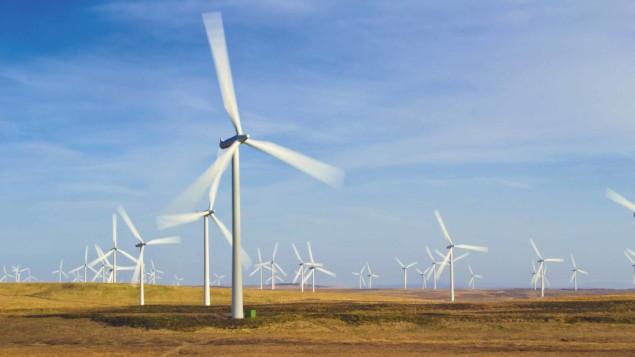
Noise from wind farms may be more bothersome at night than it is during the day – and not only for the reasons you might expect.
While it’s true that competing sources of background noise (such as traffic) tend to die down at night, and people are more likely to notice sounds when they’re trying to fall asleep, scientists in Australia have found that physics as well as psychology plays a role in wind-farm-induced sleep disturbances.
According to Kirsty Hansen, an acoustics expert at Flinders University, one of the most noticeable types of wind farm noise is the “swooshing” sound produced as the blades rotate. In her latest research, published in Measurement and Applied Acoustics, Hansen and colleagues at Flinders and the University of Adelaide found that this swooshing sound (known technically as amplitude modulation, or AM) is by no means constant. “The noise seems to worsen after sunset,” explains Duc Phuc Nguyen, a PhD student at Flinders and the lead author of both studies. “We found that the amount of amplitude modulation present during the daytime versus night-time varies substantially, occurring two to five times more often during the night-time.”
Members of the team used a combination of long-term noise monitoring and machine learning to analyse how often AM occurred. They found that observers located around 1 km from a wind farm experience AM more than 50% of the time between the hours of about 8pm and 5am, whereas at mid-day the prevalence drops to around 20%. For observers 3.5 km away, the comparable figures are 30% and less than 5%.

Optimal size for wind farms is revealed by computational study
The team attribute the day-night variations to differences in prevailing wind and air conditions at the locations they studied. Hansen, who is also involved in a separate study that aims to quantify sleep disturbances due to wind farm noise, notes that people living downwind or crosswind to turbines are also more likely to experience AM.
Hansen says that her long-term goal is to make wind energy more acceptable to the public by improving noise assessment methods, regulatory guidelines and turbine designs for wind farms. “These studies advance our ability to measure and monitor the noise from wind turbines that is likely to be more annoying than other noise types at the same level,” she concludes.



